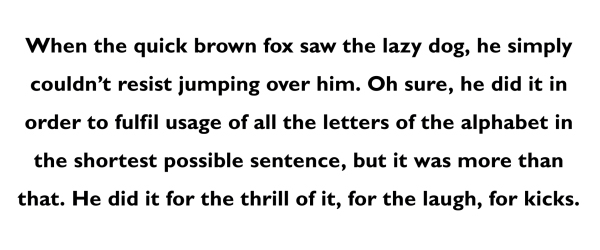binocular vision
Most of what we learn, especially in the classroom, is through our visual system. Vision is our most powerful sense. How often do you hear that “My child had their eyes tested and they got 20/20”, yet they are struggling at school both academically and socially.
It is estimated that approximately 80 percent of your child’s learning in school and at home occurs through his or her eyes. Reading, writing, math, problem solving, using computers and copying notes from the board are all visual tasks that children perform daily.
Kids must acquire many physical and mental abilities to perform well in school, but a good vision system not only allows our child to see information, but process information through their visual system, which is key to the learning process.
As a child progresses in school, they face increased demands on their visual system. The print size of letters and words in textbooks becomes smaller, they must retain large quantities of information, and the amount of time expected to read and study increases significantly, many times before your child’s visual system is fully developed and ready for this type of learning.
The increased amount of time for focus on the teacher, copying notes from a whiteboard to a paper and a surge of homework all creates demands on a student’s eyes. Many children adapt and excel because their visual system performs adequately, but others struggle with these demands when their visual system experiences certain deficiencies.
There are three key features of the two eyes that affect this process.
Convergence / Eye Teaming
Good eye teaming is required in order that a child does not see words overlapping and instead sees a word clear and single. It is also necessary so that good eye hand coordination is developed.
i. Convergence insufficiency is when the brain perceives an object at near to be farther away than it is, which results in the need for extra effort to be used as the eyes and brain must work harder in order to point accurately at the object. Therefore, the eyes have a tendency to turn slightly outward when viewing close objects due to this problem with localisation.
ii. Convergence Excess is when the brain perceives an object at near to be closer than it is, which results in the need for extra effort to be used as the eyes and brain must work harder in order to point accurately at the object. Therefore, the eyes have a strong tendency to turn in during reading close work.
Both convergence insufficiency and excess have the same symptoms, which are not detectable unless the individual is tested for these. Children with these conditions can often see double, cants sustain vision for long, hate doing homework, get headaches and avoid reading.
Eye teaming problems occur in 10-15% of children and adults.
This is what reading looks like with an Eye Teaming Problem:
Accommodation / Eye Focussing
Accommodation is when our lens can change shape to focus at a near distance and then relax to see in the distance, whether it is the whiteboard at school or for driving which is required to keep our sight clear. Accommodative dysfunction will cause eye fatigue, watery eyes, excessive blinking, eyestrain and headaches. It can also cause children to avoid the task of reading and consequently learning as they often have to hold their books too close to their faces.
This naturally gets harder over the age of 45 when we start becoming Presbyopic.
This is what reading looks like with a focusing problem:
Ocular Motor / Eye Tracking
When we are born our movements are not well controlled; these are called saccadic eye movements.
By the age of five, these fine eye movements are refined and are called smooth pursuits.
Reading requires on these smooth pursuits so that we don’t lose our place on the page. Children who have eye tracking problems often use their finger or a ruler to remember their place. They often have shorter attention span, are easy distracted and have poor reading comprehension.
When these children try to read ahead, they cannot find where they were reading on the page. They will often skip lines, read lines again, skip words, muddle words up by saying “home” instead of “house”, or mixing letters and saying “was” instead of “saw”. Often these children can be labelled as Dyslexic, when all they needed was a diagnosis of eye tracking problem.
This is what reading looks like with a tracking problem:







